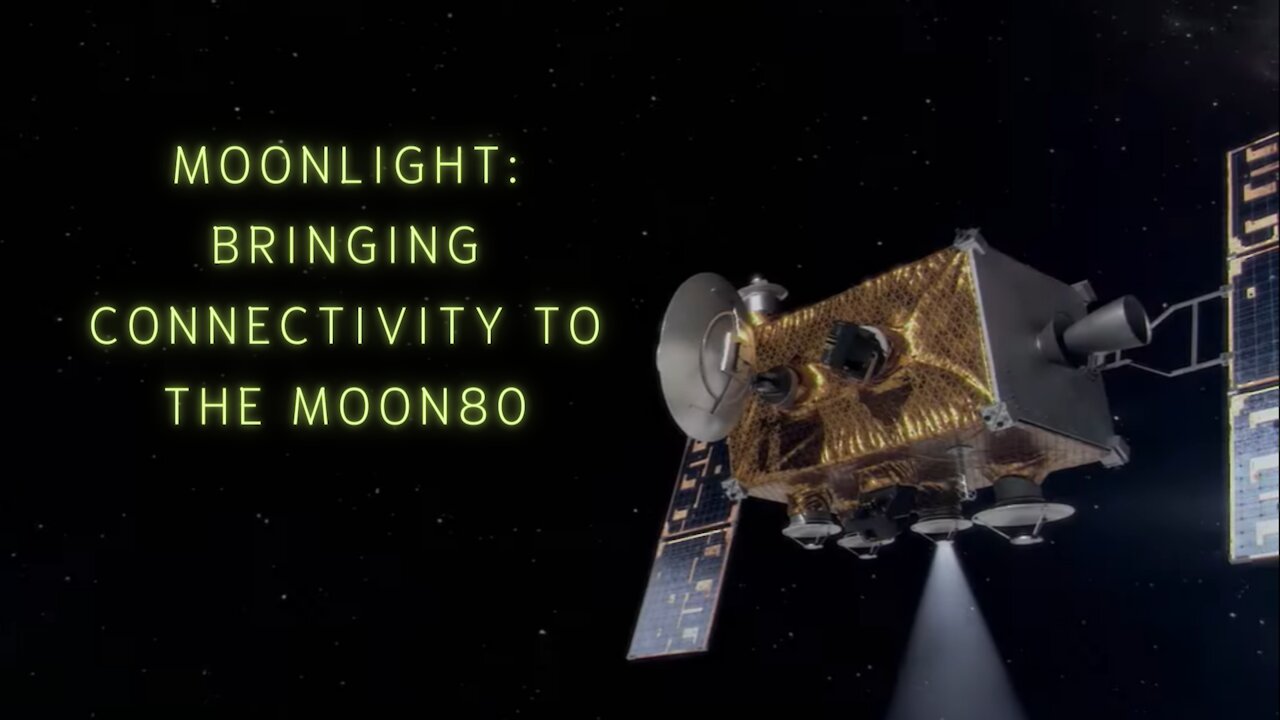Premium Only Content

Moonlight: bringing connectivity to the Moon
As international teams across the world forge plans to revisit the Moon, ESA is elaborating how best to facilitate this exploration.
As part of its Moonlight initiative, the agency is encouraging European space companies to put a constellation of telecommunications and navigation satellites around the Moon.
To succeed, the proposed lunar missions will require reliable navigation and telecommunication capabilities. Building these independently would be costly, complex and inefficient.
If this work were outsourced to a consortium of space companies, each individual mission would become more cost-efficient.
Having one system dedicated to lunar telecommunications and navigation could reduce design complexity, liberating missions to concentrate on their core activities.
Because missions could rely on this dedicated telecommunications and navigation service, they would be lighter. This would make space for more scientific instruments or other cargo.
An accurate and reliable telecommunications and navigation service would enable missions to land wherever they wanted. Radio astronomers could set up observatories on the far side of the Moon.
Rovers could trundle over the lunar surface more speedily. It could even enable the teleoperation of rovers and other equipment from Earth.
Finally, lowering the ticket price to lunar exploration could empower a wider group of ESA member states to launch their own national lunar missions. Even on a relatively low budget, an emerging space nation would be able to send a scientific cubesat mission to the Moon, inspiring the next generation of scientists and engineers.
ESA - European Space Agency
Closed captions available
Captions and subtitles are available (automatically generated by YouTube) - select your language using the YouTube player controls. A non-YouTube version is available using the 'download' and 'source' buttons below.
Documentary
Telecommunications & Integrated Applications
Moon Moon mission Space Exploration Telecommunication Telecommunications
-
 0:15
0:15
Author Vicki Hinze Book Videos
4 years agoBringing Home Christmas
40 -
 3:05
3:05
YoTricks
3 years agoMoonlight Yoyo Trick - Learn How
519 -
 0:15
0:15
mattochan01
4 years agoIce float in moonlight
22 -
 2:50
2:50
WSYM
4 years agoBringing in the Neighbor's Trash
8 -
 5:17
5:17
KiltedPiperSteve
4 years agoMoonlight Prayer
19 -
![Rumble Gaming Talk [LIVE from DC] - #RumbleGaming](https://1a-1791.com/video/fww1/89/s8/1/d/p/E/C/dpECy.0kob.1-small-Rumble-Gaming-Talk-LIVE-fro.jpg) LIVE
LIVE
LumpyPotatoX2
2 hours agoRumble Gaming Talk [LIVE from DC] - #RumbleGaming
441 watching -
 1:12:34
1:12:34
Tucker Carlson
1 hour agoMaxime Bernier: Trump’s Tariffs, Mass Immigration, and the Oncoming Canadian Revolution
11.4K33 -
 LIVE
LIVE
Akademiks
22 minutes agoDay 1/30. Tay K gets 80 Years in Prison. Offset P*ped out Moneybagg yo Girl. Cardi Confirms.
2,272 watching -
 1:08:46
1:08:46
Russell Brand
3 hours ago“Trans Women NOT Legally Women,” Supreme Court Declares – SF567
46K52 -
 DVR
DVR
Sean Unpaved
2 hours agoTodd McShay Breaks Down the 2025 NFL Draft
7.57K